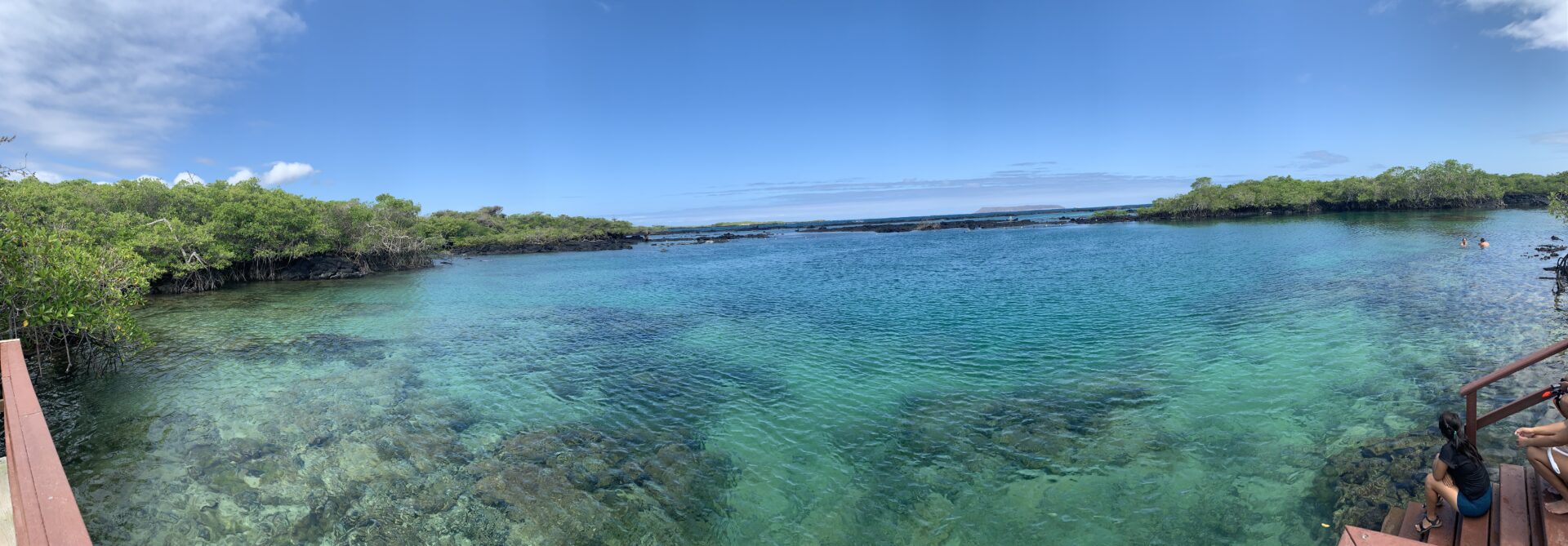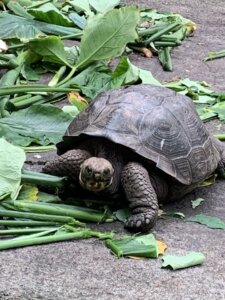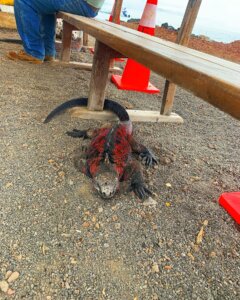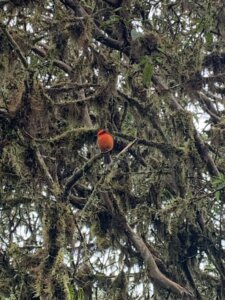The Galapagos – balancing tourism and the ecosystem
Written by Grace Genevieve Stewart-Piercy on 4th April 2025
The Galapagos have had to find a precarious balance between protecting the animal and plant species within the archipelago and also protecting the tourism that the beauty and history of the islands attracts – Grace Stewart-Piercy looks into how this is finding a level.

How does one of the World’s most beautiful locations balance the constant demand of tourists and the delicasies of nature? The Galapagos is a unique location where the tourism industry is so vital yet so damaging to the eco systems, there is an effort to try and change this though.
Tourists are encouraged to enjoy the unique location and experience but to adopt the attitude of ‘taking nothing but memories and leaving nothing but foot prints’.
Ady Nwosu-Hope, who has visited the Galapagos, said: “The impact on me was phenomenal, it was a long lasting realisation of how amazing nature can be when you leave things alone.”
The Galapagos archipelago is located roughly 600 kilometres from the mainland of Ecuador, in South America.
The Galapagos are made up of 19 islands, only five of which are inhabited by people. The islands which are inhabited by people are Floreana, Santa Cruz, San Cristobal, Baltra, and Isabela. Across the five islands, there are actually 30,000 people living.
Whalers and pirates were the first people to consistently pass through the islands. The most famous person to study the Galapagos islands was Charles Darwin, who used it to help create his theory of evolution.

Galapagos Giant Tortoise
Darwin’s visit cemented the Galapagos as a vitally important eco-system and habitat. The groups of islands support one of the highest levels of endemic species compared to any other location in the world.
Hannah, communications and marketing officer for The Galapagos Conservation Trust, said: “the Galapagos islands are incredible and incredibly diverse. We’ve got you know giant tortoises, whale sharks, hammerhead sharks, Darwin’s finches – which is probably one of the reasons it’s most famous.
“Charles Darwin went there and was inspired by what he saw. That trip, he went on HMS Beagle all those years ago helped him come up with theory of evolution.”
There are around 2,000 species that can only be found in the Galapagos, this is what makes the islands truly special. 97 per cent of reptiles and land mammals are found nowhere else on earth, which is a huge number of animals.
Even 80 per cent of land birds are found only on the group of islands, which is extremely special. Along with 30 per cent of plants also being endemic to the area.
Whilst most tourists aim to be respectful of the islands’ residents both human and otherwise, their arrival does have an impact.

Marine Iguana which is endemic to The Galapagos
Ady, said: “I would never go back. I have had the privilege of visiting and I would not go back again as a tourist. I would not want to add to the destruction.
“If we go back over and over again, it will all change.”
In an aim to ease problems caused by a sharp increase in tourism, in 2024, the international fee to enter the Galapagos National Park was doubled. The national park accounts for 97 per cent of land on the islands and by doubling the entry fee it is hoped that some issues can be calmed.
The Galapagos has unfortunately got one of the highest extinction rates in the world, this is because for millions of years the islands were able to be in complete isolation, they are now inhabited and visited by around 270,000 tourists a year.
The Galapagos National Park fee being raised for the first time in a quarter of a century (now $200 USD), was brought in to support the pressures now pressing down on the group of islands.
Land based tourism is causing issues for animals, not only directly, but also due to the problems caused for waste management systems, water scarcity and, maybe most importantly the impact of invasive species being brought to the archipelago.
The funds raised by the charge increase were promised to be put directly back into helping to support these potentially devastating issues. This is a huge help in balancing the issues of over-tourism and the eco system.
Hannah, said: “Over-tourism can damage and does damage, not only wildlife, but fragile, already fragile infrastructure, waste management systems, things that are already fragile enough. So, it’s finding that balance.
“So for us, security work is important. It’s also important for biosecurity because you want to reduce the risk of people bringing invasive Species.”
Nearly 50 per cent of the Galapagos’ land birds are at risk of extinction, this is predominantly because of rats and feral cats, living on the islands. In excess of 1,600 invasive species have been introduced to the islands. One of the biggest threats is the Avian Vampire Fly which increased the mortality rate in chicks across the islands.

Vermillion Flycatcher bird
One bird which has been drastically effected is the Vermillion Fly Catcher which is declining at a rapid rate, leaving its conservation status at ‘vulnerable’.
Tourists are also being urged to think carefully about what they pack when they come to the Galapagos.
Hannah Rickets, communications and marketing officer for The Galapagos Conservation Trust, said: “Avoid using single use plastics, of course, toxic sunscreens, stuff like that we have packing lists for people.
“There is a way to do this that has minimal impact and I’m sure you know the people who want to visit don’t want to cause any damage or harm to habitats or species.”





